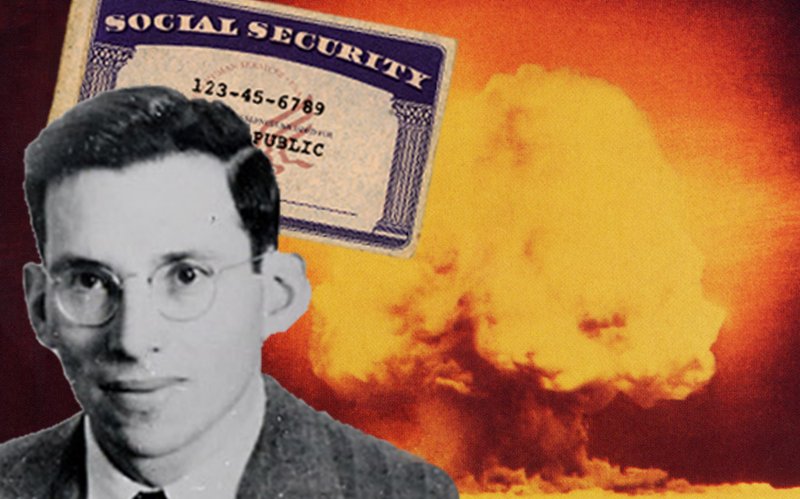The Soviet Atomic Spy Who Asked for a U.S. Pension

George Koval infiltrated the Manhattan Project and helped Stalin build the bomb. Then he asked Uncle Sam for his Social Security check.
This is how the most dramatic scene of The First Circle, the most famous novel of Alexander Solzhenitsyn, begins:
“One of the wooden booths outside the station was empty but seemed to have a broken window. Innokenty walked on, into the station. Here the four booths set into the wall were all occupied. But in the one to the left, a rough-looking character, not quite sober, was finishing his call and hanging up the receiver. He smiled at Innokenty and started to say something. Innokenty took his place in the booth, carefully pulled the thick-paned door closed, and held it shut with one hand; the other, still gloved, trembled as it dropped a coin into the slot and dialed the number.
After several prolonged buzzes the receiver was lifted at the other end.
“Is this the secretariat?” Innokenty asked, trying to disguise his voice.
“Yes.”
“Please put me through to the Ambassador immediately.”
The answer came in very good Russian.
“I can’t call the Ambassador. What is your business?”
“Give me the charge then! Or the military attache! Please be quick!”
The novel is set in winter Moscow of 1949, and Innokenty was a disenchanted Soviet Foreign Ministry official desperate to trust the Americans with a secret. After much delay, he conveys the message to the U.S. Air Force attache: “This is a life-and-death matter for your country! And not only your country! Listen! Within the next few days a Soviet agent called Georgy Koval will pick something up at a shop selling radio parts; the address is—,” and then he finally made himself crystal clear, “In a few days’ time the Soviet agent Koval will be given important technical information about the production of the atomic bomb, at a radio shop.”
The Soviet Union was desperately trying to catch up with the United States in producing the most deadly weapon on the planet, and Solzehnityn’s story was based on reality. A Soviet diplomat had rung the U.S. embassy, Stalin’s security services intercepted the call, recorded the conversation and sent the recordings to identify a caller to a secret research facility manned by secret services, known as Sharashka or Marfino. The research in Sharashka was conducted by imprisoned engineers, heavily guarded. One of those engineers was Solzhenitsyn.
This story started a chain of events, crucial to the Cold War history. It inspired Solzhenitsyn to write his very first novel. His closest friend in Marfino, Lev Kopelev, who was tasked to identify the voice of a caller, was to become a famous dissident, a flamboyant intellectual, respected in many circles of the Moscow intelligentsia.
Kopelev got Solzhenitsyn his first major publication in a Soviet journal, using his connections to bring One Day of Ivan Denisovich to the attention of the editors of Novy Mir. In 1968, one of Kopelev’s relatives was one of eight people in Red Square to protest the invasion of Czechoslovakia, the most famous event in the history of the Soviet dissident movement.
The episode in Marfino had a huge impact on secret services, too. The research that had led to the identification of the traitor was carefully preserved and transferred to another Sharaskha in Kuchino, which was to become the birthplace of the Russian system of Internet surveillance, SORM (I recount this story in my latest book, The Red Web).
But there was a spy in The First Circle, and this spy was real.
Solzhenitsyn carefully changed all names, except for the betrayed Soviet spy, Koval — apparently he thought the imprisoned engineers would have never given a real name of a betrayed spy by their masters. As it turned out, he was wrong.
Политика конфиденциальности | Правила пользования сайтом







